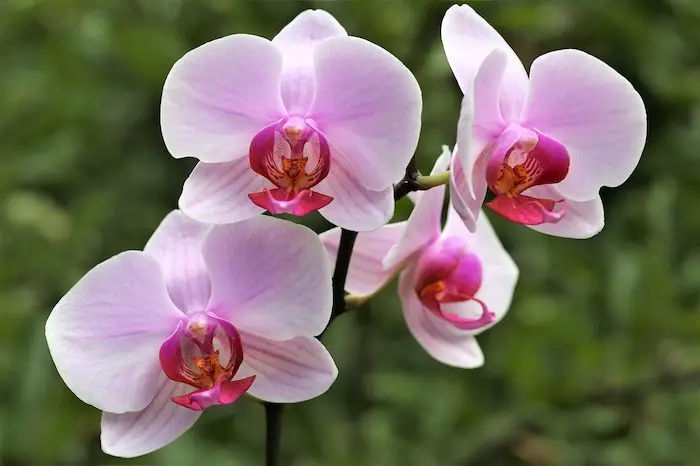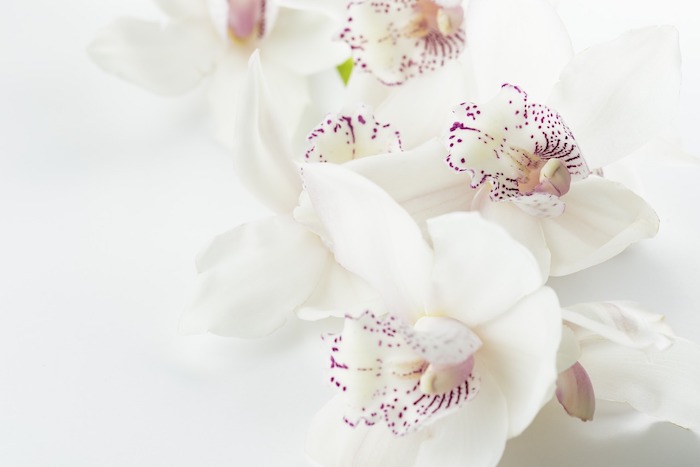Bright, gorgeous, and delicate blooms that last for months at a time! Yes, we are talking about Orchids, flowers that look like beautifully colored butterflies and are every gardener’s dream. Whether you plant them outside or indoors, you are in for an adventure when you decide to grow these super addictive flowers.
H-o-w-e-v-e-r, there’s a catch. Orchid plants are not meant for the casual or forgetful gardeners. Flowers that look so simple and effortless actually need a little more care than other flowering plants. If you pamper them well, they will bloom year after year adding exotic beauty to your home.
If you are a beginner at growing orchids, we understand that this can be slightly confusing for you. Hence, we have created this ultimate guide containing a list of useful advice, tips, and ways to keep Orchids alive for longer. So, let’s get started.
1. Let There Be Enough Light
Orchids thrive in brightness and light, but the sunlight should fall on them indirectly. If the plant is kept under direct sun, you can soon see that the leaves and flowers have started wilting. When exposed to direct heat for long, you even stand the risk of burning the leaves
Our experts suggest that you keep an orchid plant on an east-facing window that gets the soft morning light. If there’s south or west-facing window in the house then that will work too. Take care to protect the flowers and leaves from the harshest run rays of the afternoon.
Different species of orchid flowers have different light requirements and this can be divided into three subcategories.
- High light (30,000-50,000lux) in the south-facing windows in the northern hemisphere are most suitable for Cattleya and Vanda orchids. You should still avoid hotter times.
- Medium-light (10,000lux) is preferred by the Paphiopedilum and Phalaenopsis species. Keep them in east-facing windows and use a shaded curtain to block the light during hotter times of the day.
Too little light can also be bad for your Orchids and this is one of the common mistakes beginners do. As a rule of thumb, you should ensure that the plants get as much light as they can tolerate happily. When the light is low, the leaves will appear greener and they will get yellowish when there’s too much heat.
How to tell whether or not the orchids are getting enough light
You can tell this by simply looking at the color and texture of the leaves. If you see the leaves look sun burnt with red and brown patches, it means you need to reduce light. On the contrary, if the leaves appear dark then the plant is not getting enough light.
We recommend the Light Meter 881D that comes with Celsius and Fahrenheit temperature conversions to help you measure the amount of sunlight the plant is receiving. The unit allows you to measure the luminosity from 0.1Lux to 400,000Lux within seconds.
Note: Orchid plants that have erect and thicker leaves can tolerate more light than the ones that have horizontal and thinner leaves.
2. Watering Correctly
Just like sunlight, water is also a crucial part of Orchid care. Too much or too little is never good. As per our experts, you must water the plants once a week using lukewarm or room temperature water. When watering the plant, you must carefully pour water under the leaves.
If you get the crown part wet, then use a paper towel to wipe it dry. Studies have revealed that if the crown area stays wet for a long time, this may lead to rotting and ultimately killing the plant. You must also remember to water Orchids on a sunny day before afternoon so that the crown has enough time to dry if it gets wet.
If you have a potted Orchid plant, you must ensure that the pot has good drainage so that water does not sit in the roots. The water requirement will also vary depending on the season. For example, it will need more water in summer and less in winter.
If at any time you cannot decide whether you should water or not, it is better to leave it for next day. You must remember that overwatering can damage Orchids more than under watering, and it is one of the common causes of disease in an Orchid plant. So, avoid watering when in doubt!
What role does potting mixture has in watering
The type of potting mix used for planting is related to how often or less you need to water an Orchid plant. Most of the plants you get from the market are sold in mixes that allow weekly watering only. To determine whether or not your plant needs water, do a quick finger test at home.
- Stick your finger inside the potting mix a couple of inches
- Check to see whether the mix id wet or dry.
- If it less wet, don’t water until it becomes dry again.
To water an indoor Orchid plant, we suggest that you take the pot to the sink and let room temperature water run until it flows from the holes at the bottom. Alternatively, you may submerge the pot in a bucket filled with lukewarm water and lift it out to drain out the excess water.
What are the signs of overwatering and under watering
It’s hard to tell because the signs and symptoms of both are so akin each other. Well, we never said keeping Orchids alive was going to be easy! In both cases, the plant shrivels and dries out. In under watering, it dries due to lack of water and with overwatering, it shrivels because the roots are dead.
When the plant appears to shrivel and you can’t tell the real reason, we would suggest that you lift the plant out of the pot to inspect the roots. Are they white, firm and healthy? Or soft, dark, and mushy? In the last case, you must repot the plant in an attempt to revive it again.
Why use ice cubes for watering
Use ice cubes straight from a small or medium ice tray is a great way of watering Orchids as they improve absorption, prevent overwatering and root rotting. Depending on the season, you may use one ice cube twice a week by placing it over the potting mix, under leaves. Make sure there’s no water pooling or standing in the pot because extra moisture can be detrimental for your plant.
3. Maintaining Right Temperature
Ideally, the Orchid plants grow well when the temperature is between 59 degrees to 86 degrees Fahrenheit. The placement of the pot is also important. You should ensure that you keep it away from sources of heat such as your refrigerator or radiator as the surrounding air will be drier.
Just like light and water requirements, the temperature should also be maintained at optimal levels depending on the Orchid species. For warm-growing Orchids (Phalaenopsis orchids), the favorable temperature is between 77°F and 85°F.
The cool-growing orchid plant species such as Masdevallia prefer a temperature between 60°F and -70°F. As the temperature range is tough for most household growers to achieve, these plants are not widely available. You will mostly find them with ardent orchid hobbyists.
The intermediate orchid species such as Cattleya orchids on the other hand prefer day temperatures ranging between 65°F and 75°. Typically, the Orchids appreciate a drop in temperatures by 10 to 15°F at night time.
To make it easier for beginners to keep the plants alive, most of the commonly-available orchids are capable of thriving in normal temperatures. If you got an Orchid will special temperature requirements you will need to ensure that you create a favorable environment conducive for its growth.
Pruning Should Not Be Skipped
Many beginners often wonder whether or not cutting the dried or dead parts of the plants is a good idea. If you are thinking the same then read this carefully. When a flower on your plant looks like it’s has dried out, you can do any of these:
- Cut the complete spike running down to the leaves and this will help in producing a new healthier stem within a year
- Cut the first node below the dead bloom, hoping that the stem will produce fresh and healthy flowers in 8-12 weeks.
Many beginners are unsure whether or not pruning their Orchids can help them stay alive for longer. Well, to be precise trimming the old dried out stems that have turned brown and lifeless is a good idea to make way for new growth. If the tip is still green, a new stem may rebloom from the same place or branch out from further back in the stem.
However, cutting down green flower stems or pruning the plant simply to keep it short is not a good idea at all. This way you put undue pressure on the plant. Trimming or pruning should strictly be limited to only removing the dried leaves, stems, or flowers that have dried and died out.
If this is your first prune and the stem appears healthy, we suggest that you trim the stem just above the node/ notch where the first flower bloomed. This will enable the plant to grow a new shoot. Alternatively, if you are pruning for second time and the stem appears unhealthy, we suggest that you cut the stem an inch above the base.
Important tip: Make sure you always sterilize the cutting tools before using them so that you don’t contaminate or spread the orchid diseases between various plants.
5. Feeding Fertilizer
Just like your orchids need the right amount of water to stay alive, they also need food in the form of fertilizers. You must feed your plant a light balanced liquid fertilizer (see Amazon) in the ratio of 10-10-10 or 20-20-20 mixed with a gallon of water. Feed this fertilizer mix to the Orchids once per month during the flowering time.
Once in a month, you must skip the fertilizers and use only clean water to flush out the excess salts. After the flowering phase completes, the foliage growth will stop. When you notice growth of new leaves, you can give more fertilizers and water.
What Is Ice Cube Feeding
A popular method of feeding fertilizers is to freeze the feed mix along with the required quantity of water. Just like the ice cube watering method, frozen fertilizers also get absorbed more effectively. This also eliminates the risk of over or under fertilizing the orchid plant.
Tips For Feeding Orchids Correctly
- If you miss a feed, avoid increasing the fertilizer concentration.
- We would suggest that you fertilize more often with weaker doses.
- If the laves appear very dark and drooping, this could be a sign of excess fertilization
- When you see a plant growing rapidly, add more fertilizer for good health
- If you see that an Orchid plant is not at its best health, avoid adding more fertilizer.
Important tip: Remember to not water to plants for several days after you add fertilizer to the soil or else the nutrients will flow out with the water.
6. No Potting In Soil

As Orchids naturally grow in the wild, don’t try to pot them in soil. When the bark chips have decayed after 1-3 years, water the plant and take it out of the pot. Wash the old bark starting from the root and use clippers to remove any dried or mushy roots.
You can them repot in moistened, loose, medium-grade bark ensuring that the base of the bottom leaves sits over the bark. We suggest that you repot the plant every couple of years when the bark mix starts to breakdown.
As most of the Orchid species you find in the market are epiphytes, they get unhappy is the potting mix starts to decompose, compress, or become dense. The roots need excess air so make sure there is scope for enough ventilation in the mix.
Based on the condition of the soil, you may consider repotting every one or two years. Always use a pot one to two inches wider when repotting the plant. Well, we never said it was going to be easy but it will definitely be worth the effort.
7. Handling Orchid Diseases
Pests are one of the biggest enemies of Orchid plants and they come in different shapes and sizes. Let’s start with the mealybugs and scale insects that you can remove by hand. If the leaves feel sticky or there is black mold growth, this means the plant is infested with mealybugs. Use your hands to remove them from the top and underside of the flowers and leaves (being sure to wash your hands after touching each plant!).
After removing by hand, make a solution of room temperature water and a little of dish soap in a bowl. Dip a cotton or soft cloth in the solution and wipe each leaf and stalk gently to remove any residue. This will not only kill the insects but also remove the sticky feeling.
If the problem persists and the mealybugs come back again, you can spray the leaves and stalks with an insecticide. Make sure you get an insecticide that is safe to use for Orchids. Follow the instructions given on the package.
You can also try this method below:
How To Treat An Infected Part
If you notice that a particular leaf, flower, or stem is infected, you must use a sterile cutting tool to cut off the infected parts. Signs include discolored leaves or yellow, brown, and black spots on leaves. Don’t forget to disinfect the tool you use for cutting the infested parts.
In certain cases when the plant is highly infested, the best solution would be to dispose of it completely to avoid the disease from spreading to other plants. This can be heartbreaking but this will help in keeping other plants alive.
Besides infects and bugs, the Orchids may also be infested with bacteria or fungi. Common signs of bacterial infection include brown spots, black rot, or brown rot. There may be dark spots on the leaves. Signs of fungal infections include root rot or blight, indicating that the roots have become rotten.
Take a sterilized cutting tool and remove the infected tissue, and then spray the plant with bactericide or fungicide safe for Orchids. Make sure you use the product that’s meant for the type of disease the plant is suffering from.
Related Questions
Why is my Orchid plant not flowering?
If the Orchids have not bloomed for a lot time but the plant is still healthy then there’s nothing to worry. Sometimes the plants concentrate their energy somewhere else. Try changing the location to ensure a favorable temperature or try pruning the plant to promote growth.
Why are my Orchids losing leaves?
Shedding leaves once a year is normal, but if the plants lose a lot of leaves suddenly, this could be due to excess watering or too cold temperature. Let eth soil dry completely and remove foliage to keep Orchids alive.
Why are my Orchid leaves so crinkly?
If the leaves appear crinkly or they tend to stick together then this could be due to too much dryness in the air. Try increasing the humidity levels to improve the condition of leaves.
Why my Orchid plant has so many aerial roots?
It’s natural for the Orchids to grow on trees in the wild, with their roots exposed to rainforest atmosphere. So, if the aerial roots are exposed, this means the plant is happy in the environment provided. Spray mist lightly on the roots to keep them green and healthy.
Why are my orchid leaves turning yellow
Too light or excess watering are the two reasons that may turn the orchid leaves yellow in color. Check the roots to ensure that they are not waterlogged, mushy, or brown. If roots appear healthy, shift the pot to another location that has enough light.
Related Articles:
How To Care For Orchids In A Vase
Are Orchids Fragrant? (Here’s The Answer)
Why Are My Orchids Flowers Falling Off
How Long Do Orchids Live In A Pot
Ultimate List Of Fragrant Orchids


